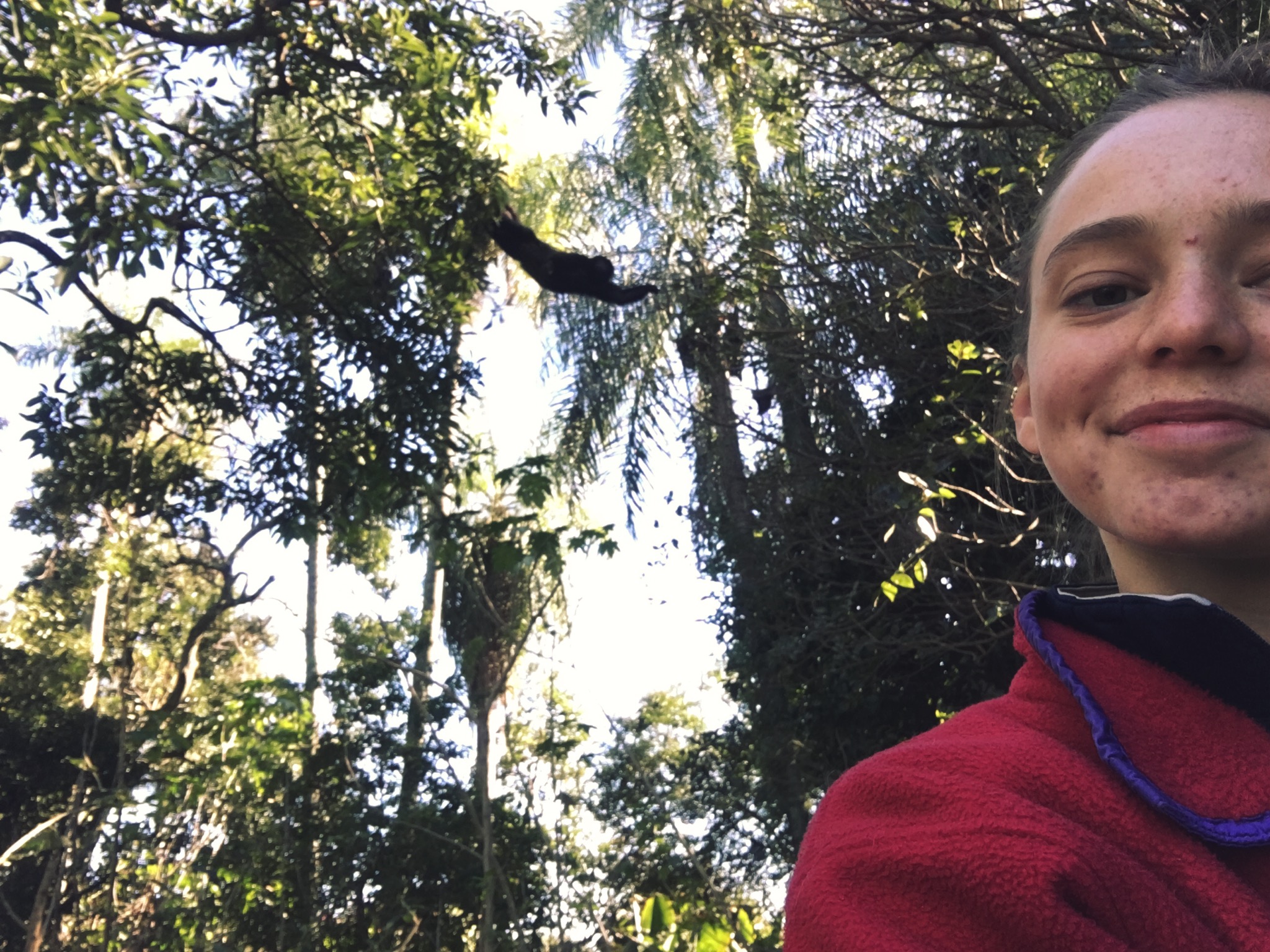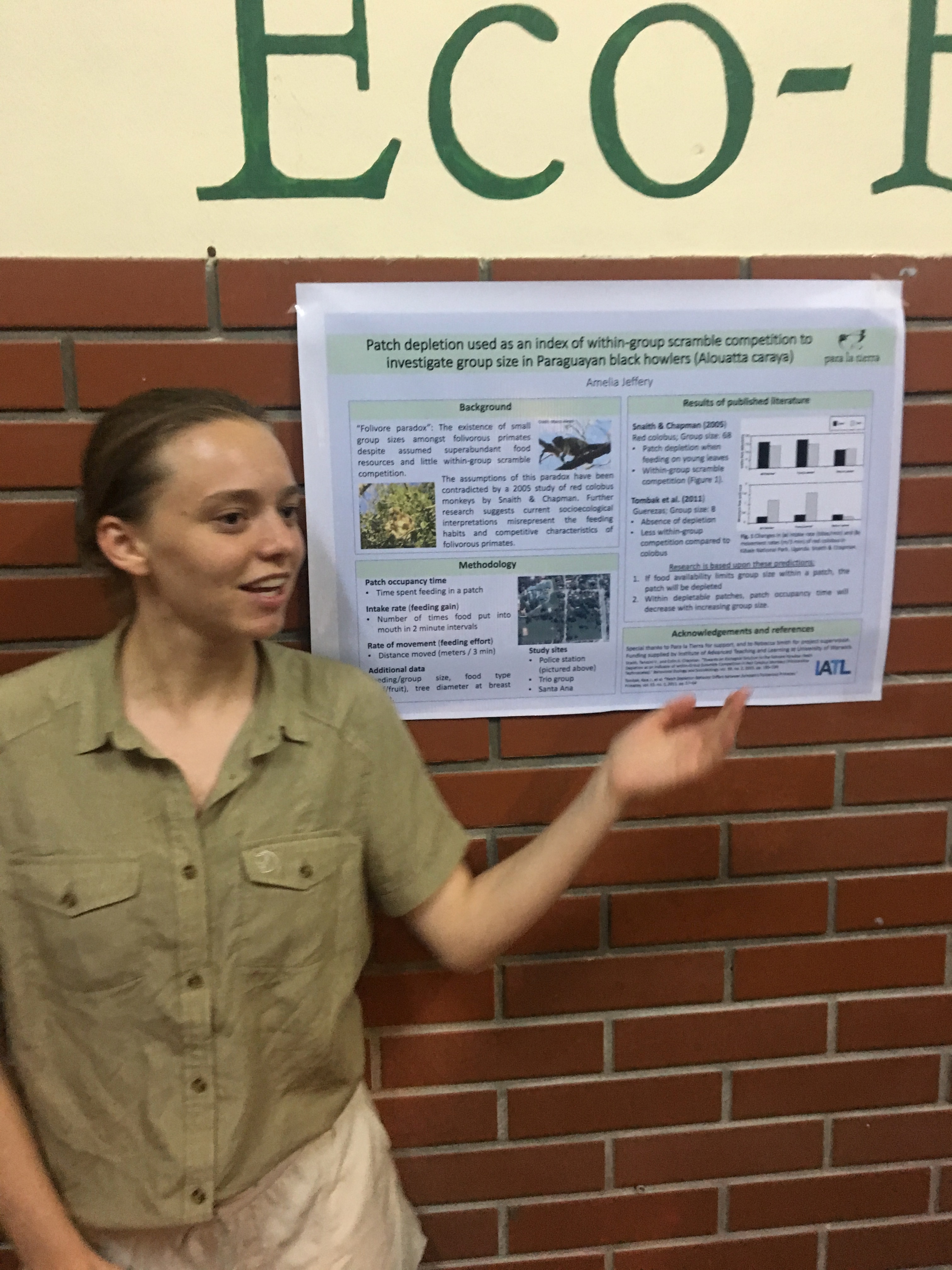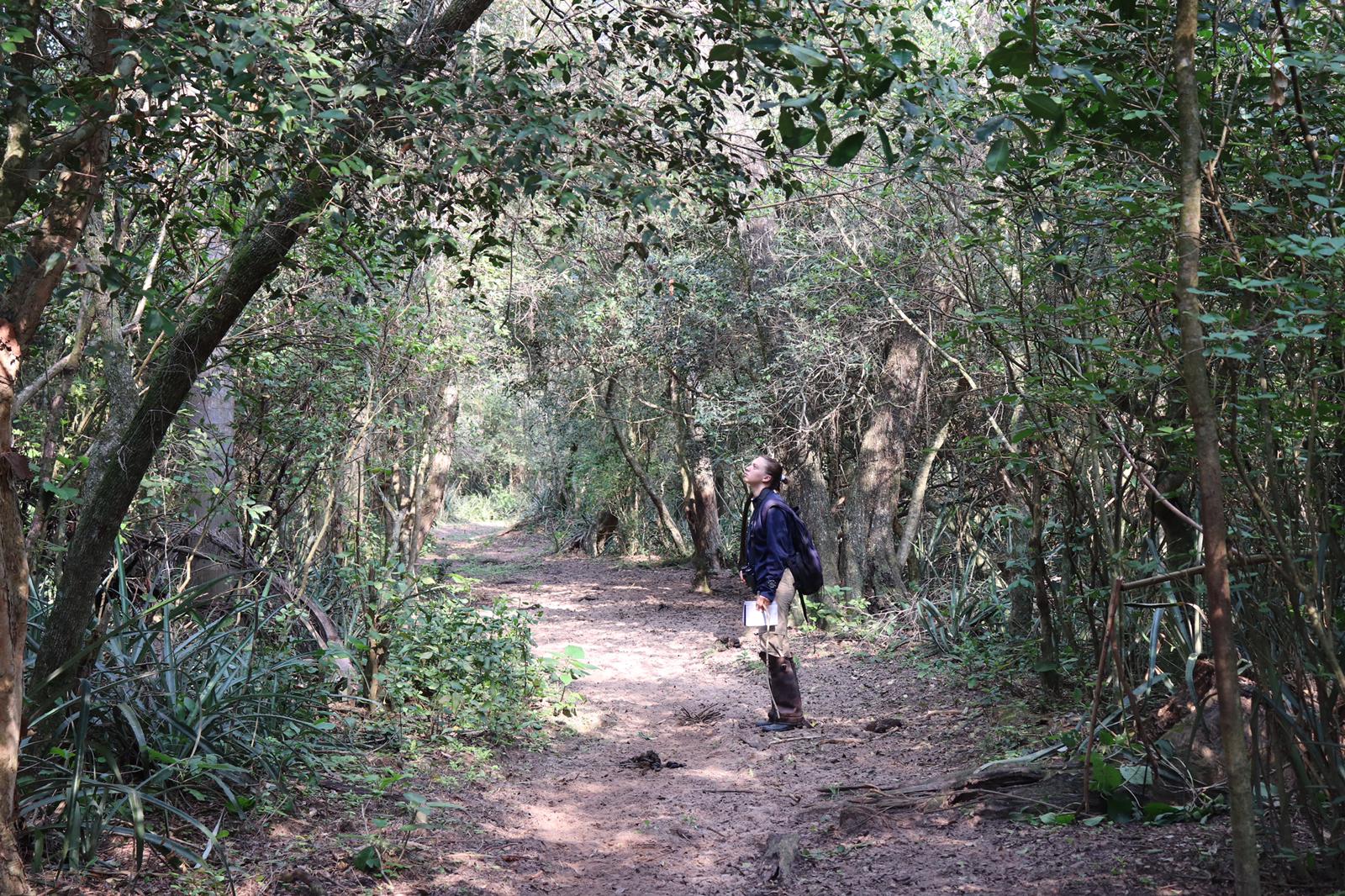My aspiration is to work in wildlife conservation, an industry that has ubiquitous paid-by-volunteer programs. Travelling overseas adds even further costs, to the extent that students like myself are limited to only the most local of opportunities. This is where IATL comes in, and makes a huge difference.
As I was searching for summer internship-type placements, I came across one from ‘Para La Tierra’ in Paraguay. What they provide is unique, in that students find their own project and after collaboration with the expert on site, develop that into a full study. Once on location, the student carries out their own fieldwork and writes their own paper - with assistance from their supervisor. The idea of completing a completely independent research project was highly attractive to me, but with payment required for both internship and flight, I had to consider whether this would be worth the expense. I discovered the flights were almost £1000 in total and was not entirely optimistic I could fund this on my own. Fortunately, the IATL ‘International Research Project’ grant was up to £1000. I immediately sent in an application.
Applying to IATL is simple and easy. It requires the student to carefully plan out their project and provide detailed explanation of the purpose. This was a useful activity for myself, as it forced me to consider all aspects of the trip: expenses, impact, dissemination, etc. I received the response to my application a few weeks later: it was approved; I was good to go.

My research project is titled “Patch depletion used as an index of within-group scramble competition to investigate group size in Paraguayan black howlers ( Alouatta caraya )” (a bit of a mouthful, I know!) Once I was in Paraguay most of my days were spent in the field recording the behaviour of the monkeys - both urban and wild. Whilst this was great experience for my future career in conservation, there were other activities I did that were equally beneficial. When you arrive, you must give a powerpoint presentation to the other staff members, volunteers, and interns outlining your topic, methodology, and expected results. Presenting to a group of people I had just met, including a primatologist and other published biologists was an intimidating prospect. However, it was also immensely helpful in forcing me to plan out my project to hold up to any scrutiny. Furthermore, every week we held a Journal Club. Two volunteers/interns/staff members would give a presentation on a paper of any sort (biology, sociology, history, etc.) as long as it was in a peer-reviewed paper. A great opportunity to learn about random topics (like giant sloths), but also to keep my own eye out for interesting papers (such as elephant’s impact on the carbon stocks of central African forests) and present them in an engaging yet succinct manner. I also had to create a poster about my project which we presented to visiting students from Miami university - another educational insight into the poster-making process. At the end of my stay I gave my ‘final presentation’. Whilst similar to the initial presentation given when I arrived, this one was expected to be more sophisticated, with a deeper explanation of the topic including previous research and gaps in research, full explanation of methodology including any modifications made, results (including statistical analyses), and discussion of these results. The presentation was timed for 25 minutes - somehow I managed to finish exactly on time! Whilst the first presentation was more about my expectations of my project - what I expect to happen, what may prove difficult, etc. - this last presentation focused more on the significance of my findings, including a Q & A session at the end. It was a nerve-wracking experience to show the culmination of my project to my supervisor, other interns/volunteers, the director of Para La Tierra. However at the end my supervisor told me how pleased they were with my work, and gave me the ‘Intern of Distinction’ award - apparently only given to 4 people in the last 9 years. I was surprised to say the least, but very thankful to be recognised for the work I had done over the past 3 months.
In addition to the fieldwork and various academic pursuits (presentations, posters, etc.), I also had to opportunity to experience other activities, like a beach clean-up with local kids from our weekly eco-club. I got to travel to the Chaco region for a few days of guided tours around the region learning about Paraguayan history - including visiting Mennonite communities. A strange highlight was eating at a Chinese restaurant, in a german-speaking Mennonite town, in rural Paraguay. I loved learning about the Chaco War and going on night drives: we found snakes, were surrounded by spiders, saw capybara and peccary, a very tall bird whose name I have forgotten, armadilloes, and the list goes on. Furthermore, one of my the most useful ‘extra-curricular’ activities were Spanish lessons. A friend of Para La Tierra, a local young woman named Beli would meet up with any interns/volunteers that wanted to learn Spanish and help them with basic conversation. I entered Paraguay knowing three words: Si, gracias, and hola. By the time I left, I managed small conversations with locals whose gardens I would sit in while watching the monkeys. They were always very friendly and very curious about where I came from, what I was studying, whether I like yerba mate. Those interactions did wonders for my Spanish learning, however they also helped with pushing me out of my comfort zone - talking to strangers in an unfamiliar language. It has definitely improved my confidence, particularly with respect to other languages I am in the process of learning.

My internship in Paraguay was an incredible, education, enjoyable experience. However it was not without its issues! I had to change my methodology multiple times due to unforeseen difficulties, including sacrificing a more in-depth research for better accuracy. During my final presentation I made a point of mentioning weaknesses in my methodology, and why the scope of my project was not as large as I would have liked. However, we learn from our mistakes, and now I know what pitfalls to look out for. To summarise the results of my project, let me explain that mouthful of a title I previously mentioned. My research was centered on the feeding of monkeys in a tree: do they deplete a food patch (tree) of food resources? Do they experience food competition within their group? And how do these two factors interact with their group size? You see, the monkeys I studied were folivorous, meaning they eat leaves - a super-abundant food item. Why, therefore, do they maintain small group of 10-15? Why not live in large groups? There are various reasons for smaller-group living, and I sought to eliminate one such option: food availability. Recent literature in primate socioecology has begun to question the assumption that leaves are super-abundant, and it is from this argument that I have built my project.
My research found that: The urban and rural monkeys did not deplete their food patches. The urban group size had an impact on amount of time spent in tree (an indication of competition), whereas the rural group size had no impact. While this suggests competition may exist amongst the urban group size, there are most likely other factors involved, and this is reflected in other literature using the same methodology in a different country. Discovering the other factors involved is not within the breadth of my own research project, however assumptions & conclusions can be made based on other research. Therefore, despite my trip being over, the research is yet to have finished!
My time at Para La Tierra was an invaluable experience to learn about conducting fieldwork, researching and writing a paper, and presenting in various formats. In addition, I learnt a lot of Spanish, made great friends with other international students, and learnt about the history of Paraguay in the very unique ecosystem of the Chaco. I am very grateful to IATL for making this opportunity possible!

Can u spot the #monkey? #Intern Amelia for sure can! She studies feeding habitats of Black #howler #monkeys (#Alouatta caraya) here in Ñeembucú. Also interested in such a cool #internship? See https://t.co/RjvUNnBcfn#Primates #Primatology pic.twitter.com/SJFSG4WyjL
— Para La Tierra (@paralatierra) September 16, 2019

